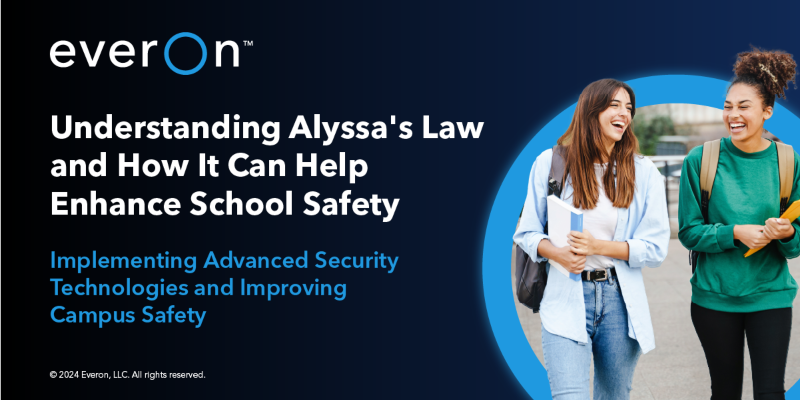What Is Alyssa’s Law?
Alyssa’s Law is critical legislation designed to improve and accelerate law enforcement’s response time during emergencies at public elementary and secondary schools. The law mandates the installation of silent panic alarms, which can automatically notify law enforcement of life-threatening situations, such as active shooters or intruders.
Alyssa’s Law is being implemented on a state-by-state basis, leading to variations in specific requirements across states. While the exact wording varies from state to state, the foundation of Alyssa’s Law mandates that public elementary and secondary school buildings be equipped with a silent panic alarm system connected to local law enforcement. To date, seven states have passed their own version of Alyssa’s Law: New Jersey, Florida, New York, Texas, Tennessee, Utah, Oklahoma, and Louisiana. Learn more about the implementation of Alyssa’s Law in each state here.
Lawmakers in other states have introduced Alyssa’s Law for consideration. To date, Alyssa’s Law is pending implementation in nine other states.
Federal School Safety and Security Legislation
The following bills have been introduced at the federal level to help improve school safety and security:
School Violence Prevention and Mitigation Act: The School Violence Prevention and Mitigation Act was introduced in 2019, and would direct the Office of Community Oriented Policing Services to award grants to public elementary and secondary schools to 1. conduct independent facility security risk assessments, and 2. make necessary, hard security improvements identified by the risk assessment.
Safer Schools Act: The Safer Schools Act of 2021 was introduced with the goal of establishing a grant program to encourage schools to conduct independent security risk assessments, and make physical security improvements based on their results. The Safer Schools Act of 2023 was introduced with the goal of allowing state and local education agencies to utilize some COVID-19 emergency relief funds to on school security and safety measures, including trainings and security risk assessments.
ALYSSA Act: The Alyssa’s Legacy Youth in Schools Safety Alert (ALYSSA) Act was introduced at the federal level and would mandate and fund the implementation of silent panic alarms for public schools in the United States.
SOS Act: The Strengthening Our Schools (SOS) Act of 2023 with the goal of increasing investments in well-trained School Resource Officers, ensuring that every school has a first responder on campus in the event of a life-threatening incident.
Silent Panic Alarms
Silent Panic Alert Technologies, sometimes categorized as duress alarms, are emergency notification systems that generate a silent alarm when activated, either manually or through software applications. The primary intent is to signal a life-threatening or emergency situation requiring a response from law enforcement and/or first responders, without alerting a perpetrator—such as an active shooter or intruder.
Panic alarms can be mounted on walls or under desks. While they are helpful in certain facilities, the typical school environment, with multiple student gatherings spread across a large campus, presents unique challenges. Virtual panic buttons installed on smartphones or mobile devices enable teachers to initiate an emergency response more quickly, as their mobile device is usually within reach, rather than requiring them to go to the nearest physical panic button location.
In critical situations, school staff can use their smartphones to provide dispatchers with their exact location and details about the emergency. These app-based buttons can be carried by teachers and administrators to various locations, such as lunchrooms, hallways, or recess areas, making them more practical for emergency notifications.
Offered by Everon, these innovative panic alert technologies integrate seamlessly with a school’s public address/intercom and mass notification systems, providing multiple options for requesting emergency assistance. Strategically located, fixed panic buttons can be complemented with virtual call-in buttons on desktop and laptop PCs, creating layers of protection that can save time and lives.







